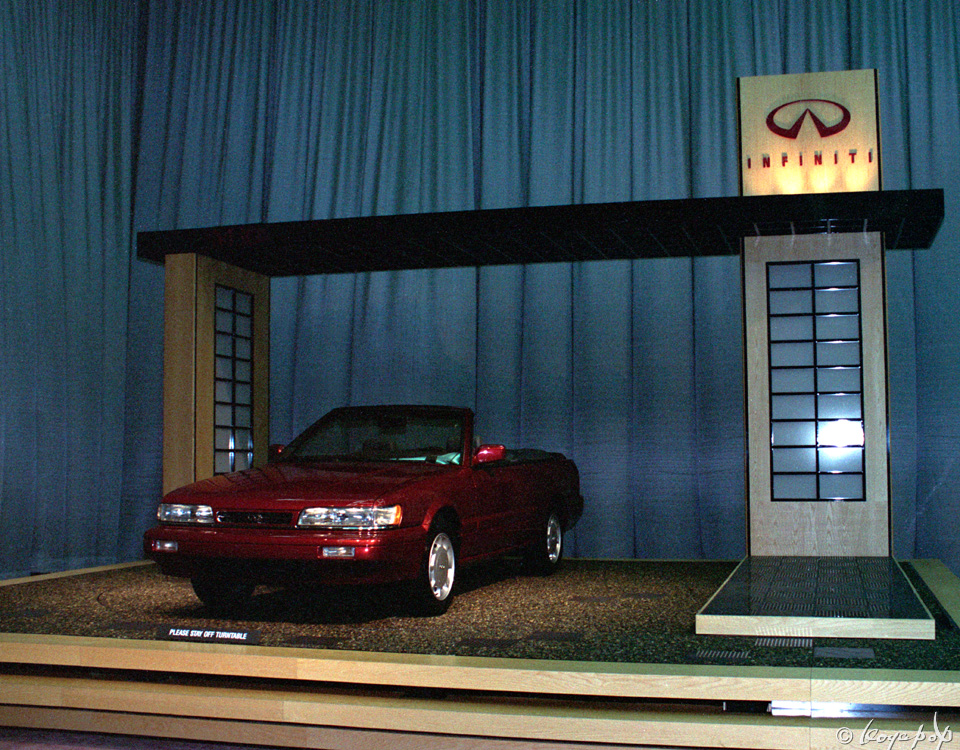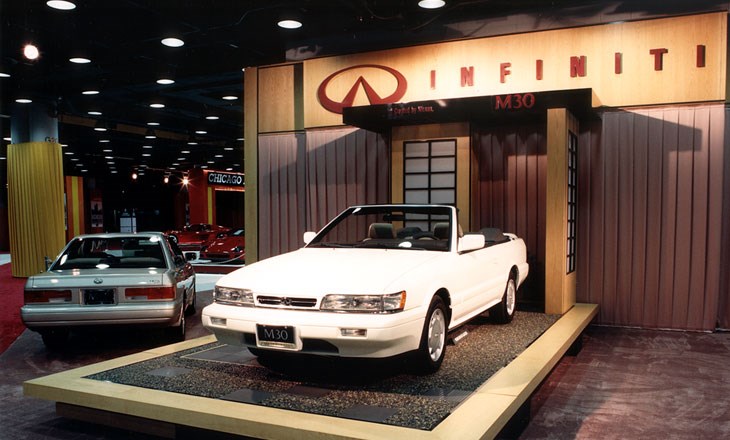
To spice up the M30 sales, Nissan/Infiniti decided to offer the M30 in a convertible form. It was common for many manufactures to work with 3rd party companies to offer Japanese cars with T tops or cabriolet (top folds down). American Sunroof Corporation, ASC for short, was one of those companies. The M30 vert was offered in 1991-1992, the later and final years of the M30. It was almost $7,000 more than the coupe. The convertible was offered in solid colors of Black obsidian, white quartz or Burgundy berry only.
The M30 convertible was only offered in America (even though some have been exported to Japan and Europe).

Zenki Leopard convertible concept

Interesting… A convertible hard top add on.
I am unsure if this concept might have lead to the M30 being a convertible or if was a thought that kept coming up. It is unknown how many M30s were converted to be topless. The common assumption was half of the total production M30s, which is untrue. There were 17,000 Infiniti M30s manufactured and from some recent resurfaced information, at least 3,000 convertibles.
The 5000 Infiniti M30 production myth debunked.
ASC reinforced the body to be more rigid with support gussets. This information might be disputed. It is said that when Nissan was manufacturing M30 frames, ones that were selected to become convertibles, would have been reinforced. This was from an article that was published in Orlando Sentinel in 1996.
When in Japan this past May (2017), Umezawa-san asked me about his M30. The papers said it was from Tennessee. When I looked at the coachbuilt.com website, ASC at the time did not a plant there.
Here is what is mentioned in the article:
At one time or another ASC, which is headquartered in Southgate, Michigan, operated plants or design/engineering studios in: Kitchener, Ontario, Canada – Rancho Dominquez (Long Beach), California – Huntington Beach, California – Columbus, Ohio – Lordstown, Ohio – Bowling Green, Kentucky – Detroit, Michigan – Lansing, Michigan – Southgate, Michigan – Owosso, Michigan – Gibraltar, Michigan – Warren, Michigan – Oak Park, Michigan – East Tawas, Michigan – Linden, New Jersey – Bloomington, Illinois – Spartanburg, South Carolina – Atlanta, Georgia -Munich, Germany – Heilbronn, Germany – Weinsberg, Germany – Youngshon, South Korea – Martorell, Spain.
additionally in that article:
The following year ASC was awarded a contract to convert the Infiniti M30 Coupe into a convertible. From 1991-1992 an estimated 2500 M30 convertibles were built by ASC at their Rancho Dominguez, (Long Beach) California assembly plant.
While not specific to the M30, the article did mention the 240sx, 300zx and Mitsubishi 3000 GT were produced. It also lends to the fact that Nissan sent the F chassis to ASC with bracing installed already.
In 1992 ASC was awarded another Nissan contract, this time for the convertible edition of the Nissan 240 SX. Most ASC convertible conversions were built using existing coupes, however the 240 SX convertible was different. Most of the required bracing and unibody reinforcements were already installed before Nissan shipped the car to ASC’s Rancho Dominguez assembly plant. The car proved popular and 8,320 examples were built between 1992 and 1994.
The 240sx contract led to another Nissan conversion and from 1993-1996 ASC built the 300ZX convertible, and even developed a retractable hardtop version for the automaker, which was shown at the 1991 Geneva Auto Salon, but they weren’t interested in the design. However their competitor, Mitsubishi, was and from 1995-1997 ASC built the limited production 3000 GT Spyder at their Rancho Dominguez assembly plant.
A little over 1,000 (1,034) Mitsubishi 3000 GT Spyders were built at ASC’s Rancho Dominguez assembly plant from 1995-1997. As did Nissan on the 240 and 300 ZX, Mitsubishi installed some of the needed bracing and unibody supports in Japan prior to shipment to ASC, however, the car was sent with its coupe roof intact.
The coachbuilt.com article on ASC is official as ASC’s website points to link as it’s history.
I was always told that the convertibles were made in Southern California because of the weather.
When you open the doors, you will find an ASC sticker attached.
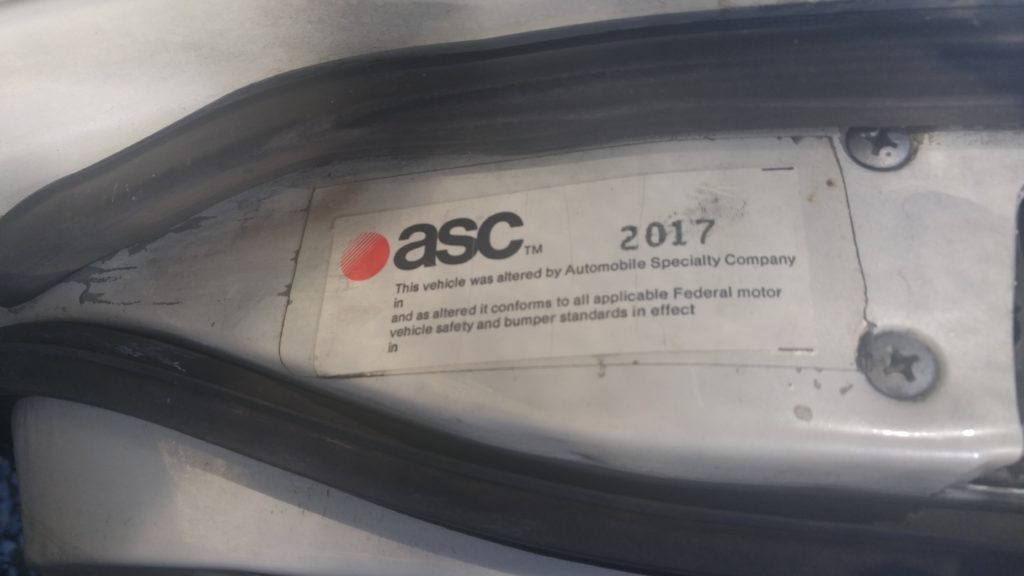
ASC sticker located on the door.
The M30 vert did help increase sales and was also more popular than the coupe at the time.
There were some differences between the coupe and convertible. Obviously the top and noticeable guide pin in the door. There are structural reinforcements throughout the chassis. The only other exterior change is the addition of a trunk spoiler which has the 3rd brake light.
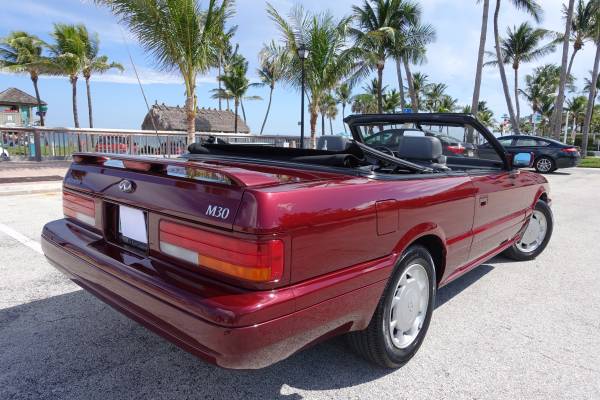
Vert spoiler with 3rd brake light in the middle.
Interior front half is mostly the same. The climate control is analog compared to the digital version found in the coupe. The rear view mirror is mounted on the windshield and features built in map lights, as opposed to the coupe version which is mounted on the ceiling and has map lights at the base of the mirror. The center console/arm rest is different as the one touch top down/up buttons are located on there.
After the front seats, it is a different set up. The front seat belts are mounted mid car, rather than near the ceiling. The space for 3 people to sit in the rear, is smaller due to the rear sides of the car housing more components. There is room for 2 people. The lights in the ceiling for the rear have be relocated on each side where the legs of the rear passengers would be sitting.
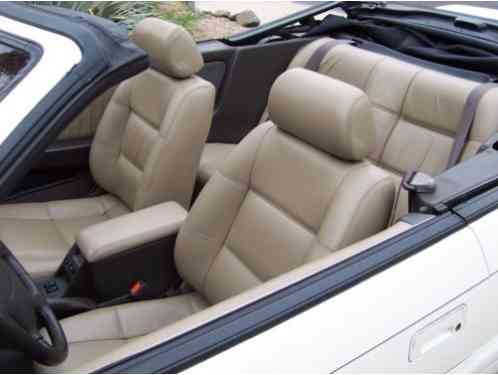
The back seats offer a different set up for the M30 convertible.
Additionally, as mentioned, the rear sides house motors on each side. The motors are for the rear quarter glass (which are significantly reduced in size).
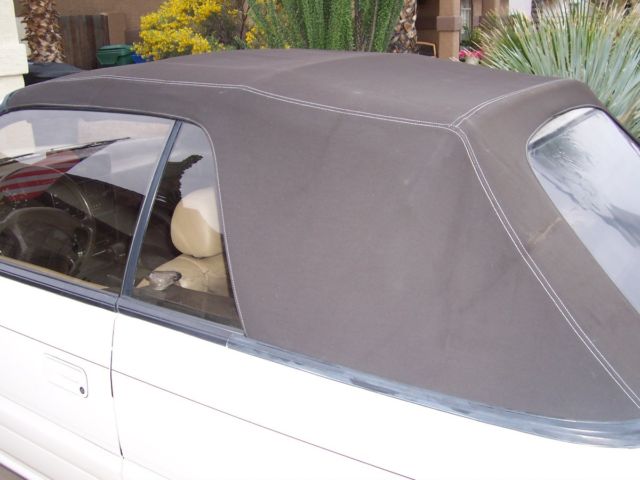
Rear quarter glass is smaller and is motorized to go up and down.
The rear quarter glass goes down with the top, leaving the M30 topless besides the windshield.
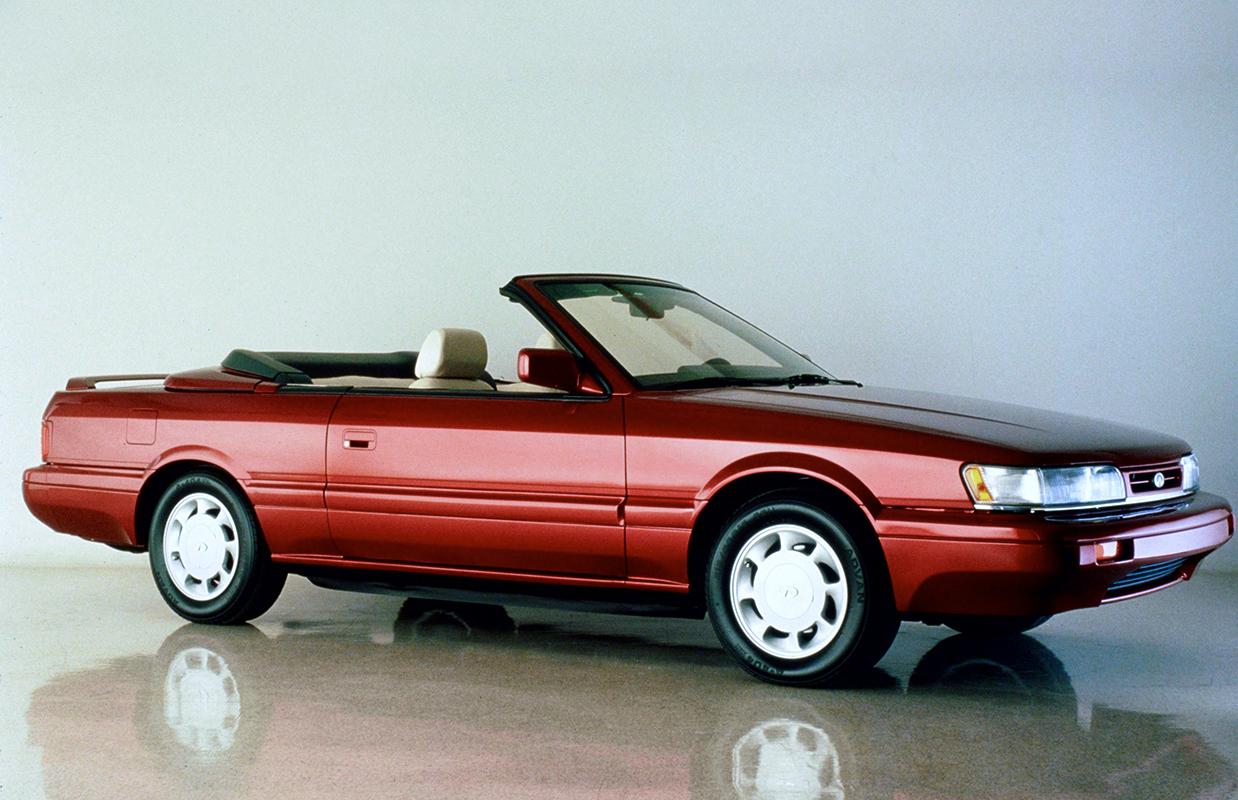
Once the top is retracted, one option that was available was the boot cover. As seen above, this is a hard boot cover (notice below the black is the hard cover part).
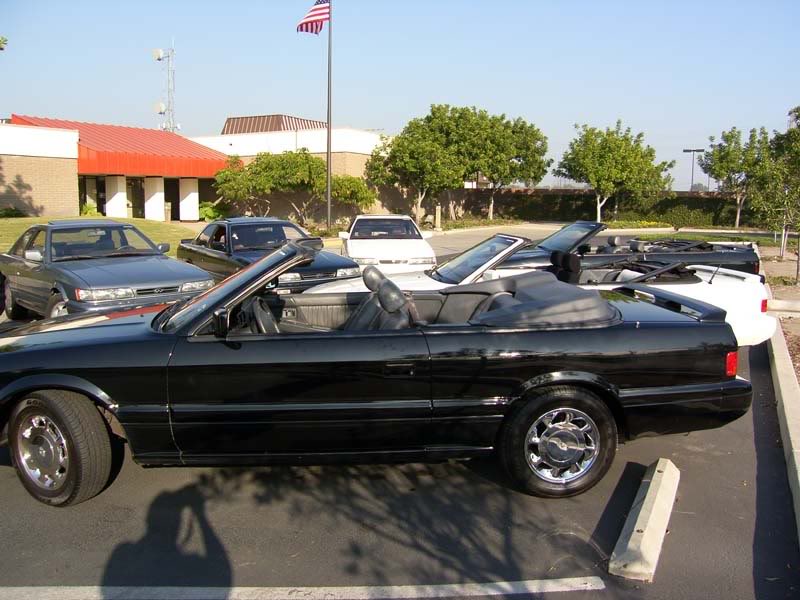
This black convertible has a soft top boot. Which can be rolled and folded. The convertible boot cover is an item that should have came with all convertible M30s, but I wonder if over time and change of ownership, many of them become lost or forgotten or thrown out.

One touch controls made the convertible top function easy.
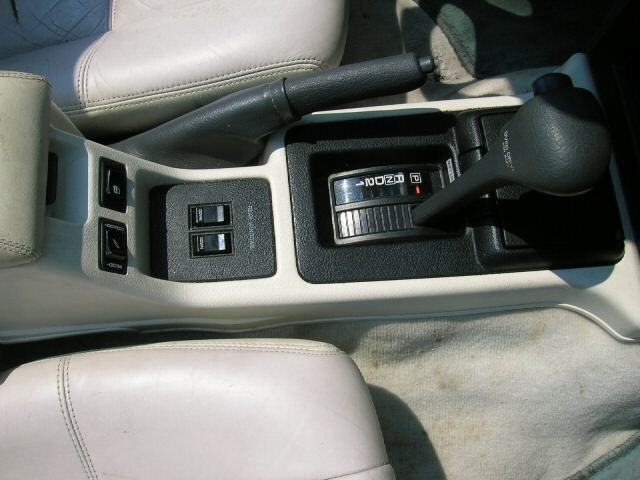
The M30 convertible enjoyed being the only luxury convertible for awhile.
